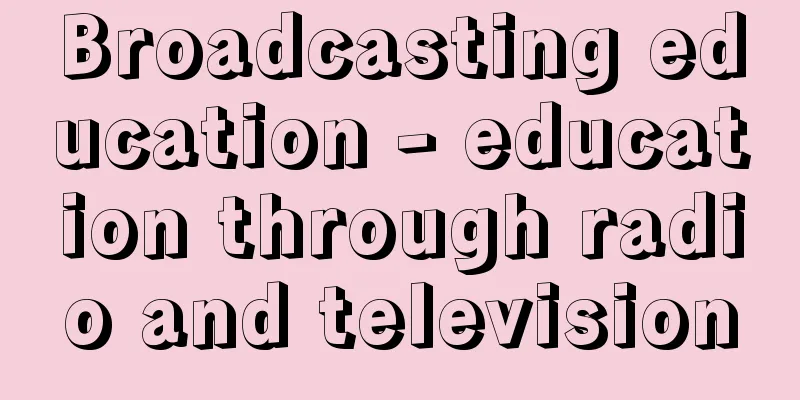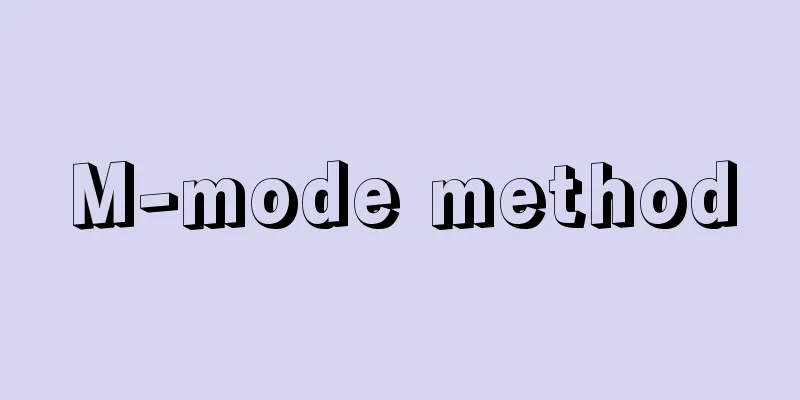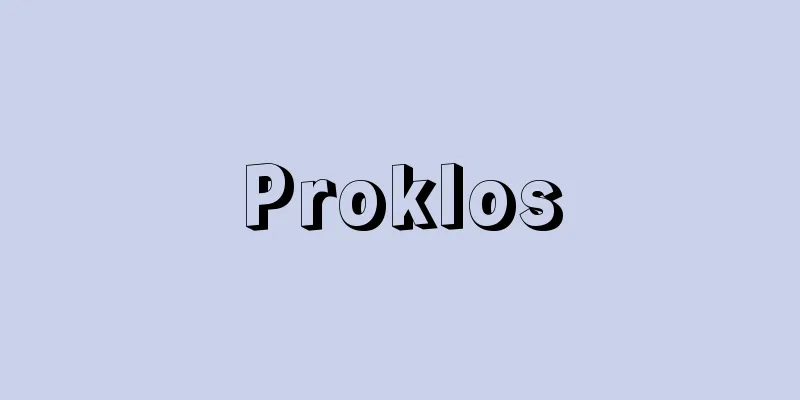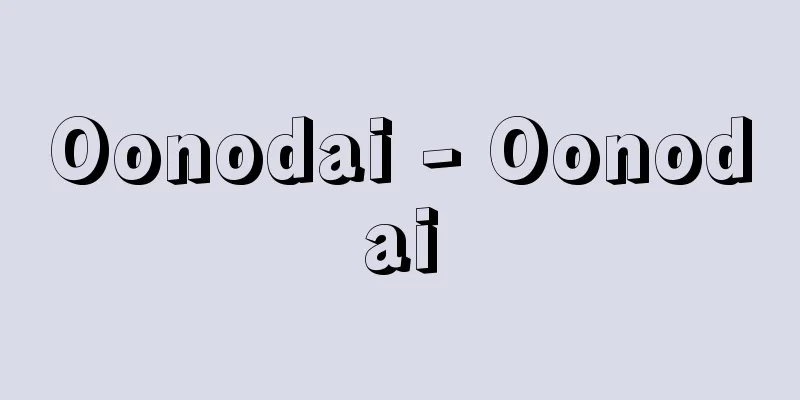Broadcasting education - education through radio and television

|
Broadcast education, taken literally, is educational activities that are carried out using broadcasting widely. The term broadcast education began to be used around 1935 (Showa 10), when NHK (Japan Broadcasting Corporation) began broadcasting to schools nationwide. From the mid-1980s, the types of broadcasting media diversified, including TV and radio, including the pioneer of so-called analog TV multiplex broadcasting, Bitcast broadcasting, and terrestrial digital broadcasting, as well as the Internet, broadcast satellites (BS), and communication satellites (CS), and the fields of use also became more diverse. However, even today, the following definition given by the Japan Society for Broadcast Education in 1982 is still widely used: "Broadcast education is the activity of expanding educational content and improving educational methods in school education, social education, etc., through the production and use of TV, radio, and similar communication media, as well as information produced through them." [Shinohara Fuyoji] School educationInitially, school broadcasts were only aimed at elementary schools, so the scope of broadcast education was limited to the elementary school level. However, over the next 50 years, school broadcasts have come to cover all levels of education, from kindergarten to high school, and new media and formats for educational broadcasts have emerged, as will be pointed out later, and the scope of broadcast education has expanded significantly beyond the school level. In the 1980s, when color television receivers were almost completely used in elementary, junior high, and high schools, the use of school television broadcasts was extremely high. At that time, in elementary schools, it was common for all classes to watch a series of television programs at a set time, and this was particularly evident in science, social studies, and moral education programs. In junior high and high schools, the use of television broadcasts also showed a tendency to increase year by year, although not as much as in elementary schools. However, after peaking in 1991 (Heisei 3), the trend has been gradually decreasing due to the diversification of broadcast media and the promotion of appropriate selection of media that better meets the interests, concerns, and motivation of each individual learner. Another trend is that while almost all teachers at elementary schools that use television do so, at junior and senior high schools, only a portion of teachers use it. In addition, while there is no age difference in the rate of teachers' use of school television broadcasts, there is a gender difference. Particularly at elementary schools, the rate of use by female teachers exceeds the rate of use by male teachers for most programs. On the other hand, the biggest trend in the late 1980s was the rapid spread of video tape recorders (VTRs) in society. The first home VTR was released in 1975 (Showa 50). In 1980, less than 5% of schools had VTRs, but by 2001 (Heisei 13), the average ownership rate for elementary, junior high, and high schools had increased to 85.3%. The spread of VTRs and the improved accessibility of video databases via the Internet, one of the diversifications of broadcasting media, have changed broadcasting education, which was centered on "live broadcasts, full-length, and continuous viewing," to "recording and selective use" or a combination of these, which continues to this day. Therefore, coupled with the progress of the development of information and communication networks, including high-speed lines, in schools, it is time to reconsider the way broadcasting education should be conducted, including the way broadcasting teaching materials are handled and how broadcasting programs are produced. One example is the promotion of the production, provision and use of programs based on educational research on "teaching methods that correspond to the media and the individuality of the learner," which is now known as "attitude-treatment-interaction" (ATI). Another example is the establishment of classes and independent activities in teacher training on video production using multimedia computers and media education on the theory and practice of information transmission. [Shinohara Fuyoji] Social EducationIt goes without saying that television and radio programs, mainly educational and cultural programs, broadcast by broadcasting stations are the main media for broadcasting education. However, with the transition to an information and communication network society, television is becoming digitalized and computers are moving towards video, and many other effective educational media have emerged other than broadcasting in the strict sense. For example, those that use radio waves other than broadcast waves include broadcasting, which transmits audio to a large number of specific receivers, and special television, which transmits images to specific facilities, while cable broadcasting, closed circuit television, and the Internet are examples of cable-based media. Furthermore, packaged media include large-capacity digital video disks and computer software. These media, which are similar to broadcasting, can be operated by small areas or groups, and are helping to promote their use according to their own special purposes. In 1999, a "children's broadcasting station" for elementary and junior high school students was launched nationwide using the educational information network "L-Net" that uses communication satellites, and the content of these programs has become even more extensive today. On the other hand, in today's highly information-driven society, it is unthinkable that school education can teach all the knowledge and skills necessary for life. We are now in the age of lifelong learning, and schools are focusing on imparting basic academic skills, ways of learning, and motivation to learn, so that students can learn the things they will need at each stage of their lives. With this in mind, we can expect to see the active adoption of radio, television, the Internet, multimedia, and other similar media, which are excellent means of transmitting information. Furthermore, by appropriately designing and constructing learning and educational environments, it is believed that these media will be utilized in all areas of education. [Shinohara Fuyoji] Changes in Broadcast EducationThe rise in the audience ratings for radio school broadcasts continued until 1960, and then, with the expansion of television school broadcasts and the spread of color receivers, the audience ratings for television began to surpass those for radio. This is the first change. The second, as already pointed out, is the change in the view of broadcasting education to "recording and selective use" with the spread of VTRs in the mid-1980s. The background to this change includes the fall in the price of VTR tapes, the appearance of high-quality, inexpensive VTR teaching materials on the market, the expansion of video libraries, and the accumulation and use of highly resourceful video materials on the Internet. On the other hand, broadcasts such as special series by program providers in response to changes in society and children also promote recording and selective use. Furthermore, the third change is the remarkable development of video discs, personal computers, and multimedia since the mid-1980s, as well as the nationwide promotion of information technology, which began with the establishment of the "IT Strategy Headquarters" within the government in 2001 and the formulation of the e-Japan Strategy, which accelerated the introduction of equipment into schools and society. A major role in this was played by the subsidy system implemented by the Ministry of Education (now the Ministry of Education, Culture, Sports, Science and Technology) in fiscal year 1985. In a society of advanced information and communication networks including terrestrial digital broadcasting and satellite broadcasting, the very nature of broadcasting is undergoing a transformation, and so we must explore new forms of broadcasting education that take into account not only social changes but also the distinctiveness of people born after the 1980s, such as digital natives, who are more proactive and comfortable with media. [Shinohara Fuyoji] International CooperationThe UK can be said to be a pioneer in educational broadcasting because it developed nationwide educational broadcasting at an early stage, and the USA because of the development of local educational broadcasting stations. Japan can also be said to be at a high level of educational broadcasting in the world. As a result, international cooperation is also active. In 1986 (Showa 61), the "Conference for the Promotion of International Cooperation in Educational Broadcasting" was organized under the consultation of the Ministry of Posts and Telecommunications and the Ministry of Foreign Affairs at that time, and a conference was held in Yogyakarta, Indonesia (1986-1991) based on the results of a survey on broadcasting education in the Asia-Oceania region. The knowledge gained there was that, although the stage of development differed in each country, the origins of broadcasting education were grasped. In this respect, the conference was very significant in terms of examining the problems of broadcasting education in Japan and in terms of international cooperation. International aid organizations such as the Japan International Cooperation Agency (JICA) continued to actively support this conference afterwards. Another international contest that has contributed greatly to the development of broadcasting education and internationalization is the Japan Prize. Founded by NHK in 1965 as an international educational program contest, it has contributed to the development of educational programs ever since, with the goal of "improving educational programs around the world and promoting international understanding and cooperation." In particular, as digital broadcasting gradually began to spread and the Internet became more widespread, the scope of content judged has expanded since 2008 to include linear content (television, video, movies, etc.), websites, educational games, and other interactive content, in order to respond to major changes in the educational field around the world. In the future, it is expected that more content using sound and video will be proposed and produced, and that the Japan Prize will become a learning forum that transcends the boundaries of media, where creators and educators can come together and encounter works that demonstrate high educational effectiveness and are creative, making it a unique place of learning in the world. [Shinohara Fuyoji] "New Encyclopedia of Education" (1979, Heibonsha) ▽ "50 Years of Broadcasting Education" edited by the National Broadcasting Education Federation and the Japan Broadcasting Education Association (1986, Japan Broadcasting Education Association) ▽ "Educational Broadcasting as International Cooperation" edited by the Overseas Educational Broadcasting Study Group (1997, Japan Broadcasting Education Association) ▽ "Research on the History of School Broadcasting in Japan" by Isobe Takeo (1999, Hokuju Publishing) ▽ "The International Expansion of Educational Broadcasting and Its Results - Summary and Outlook" edited by the Overseas Educational Broadcasting Study Group (2001, Japan Broadcasting Education Association) ▽ "NHK Broadcasting Culture Research Institute, Broadcasting Research and Surveys, various annual editions (Japan Broadcasting Publishing Association)" [Reference items] | | | | | | |Source: Shogakukan Encyclopedia Nipponica About Encyclopedia Nipponica Information | Legend |
|
放送教育を字義どおりに解すれば、広く放送を利用して展開される教育活動である。放送教育ということばは1935年(昭和10)ごろから使われ始めている。この年にNHK(日本放送協会)の学校放送が全国規模で実施されたことによる。1980年代なかばから放送媒体の種類が、いわゆるアナログテレビにおける多重放送の草分けであるビットキャスト放送、そして地上デジタル放送を含めたテレビ、ラジオのみならずインターネット、放送衛星(BS)、通信衛星(CS)など多岐にわたるとともに、その利用分野も多方面に及ぶようになった。しかし、今日でも、日本放送教育学会が1982年に示した次のような定義が一般的である。すなわち「放送教育とは、テレビ、ラジオをはじめ、これに類似する通信媒体およびそれらによる情報の制作と利用により、学校教育、社会教育などにおける教育内容を拡充し、教育方法を改善する営みである」。 [篠原文陽児] 学校教育当初、学校放送は小学校向けに行われていただけであったから、放送教育の範囲も小学校の段階にとどまっていた。しかし、その後50年以上を経て学校放送は幼稚園から高等学校に至るすべての学校段階に対して行われるようになり、のちに指摘するような教育放送の媒体や形態にも新しいものが現れ、放送教育の対象は学校の外に広がり、著しく拡大されていった。カラーテレビの受像機が小学校、中学校、高等学校ともにほぼ完全に普及した1980年代では、テレビ学校放送の利用率がきわめて高かった。当時、小学校では、全学級でテレビのシリーズ番組を継続して定時に視聴させる形が多くみられ、理科、社会科、道徳番組に顕著であった。中学校、高等学校においても、小学校ほどではないものの、その利用率は年々増加する傾向を示していたが、1991年(平成3)をピークに、放送メディアの多様化と個々の学習者の興味・関心・意欲にいっそうこたえるメディアの適切な選択が推進されたことによって、徐々に減少する傾向にある。 そのほかの傾向として、小学校のテレビ利用校ではほぼ全員の教師が利用しているのに対し、中・高校では、利用校でも一部の教師しか使っていないことがあげられる。また、テレビ学校放送の教師による利用率については、年齢差は認められないが、男女差はある。とくに小学校では、ほとんどの番組で女性教師の利用率が男性教師の利用率を上回っている。 一方、1980年代後半のもっとも大きな傾向として社会へのビデオテープレコーダー(VTR)の急速な普及があった。家庭用のVTRは1975年(昭和50)に初めて発売された。そして、学校では1980年には保有率が5%に満たなかったが、2001年(平成13)では小・中・高校の学校平均で85.3%になっている。このようなVTRの普及と放送メディアの多様化の一つであるインターネットを通じた映像等データベースへの利便性の充実は、「生(なま)放送・まるごと・継続視聴」が中心であった放送教育を「録画・選択利用」やこれらの併用利用に変化させ、今日に至っている。そのため、学校における高速回線を含む情報通信ネットワーク整備の進展とあいまって、これまでの放送教材に対する取り組み方や、放送番組の作り方などを含めて放送教育のあり方も見直すときにきている。その一例に、今日、「特性処遇交互作用」(aptitude-treatment-interaction、ATIとよばれる)で明らかにされている「メディアと学習者の個性に対応した指導法」に関する教育研究に基づく番組の制作や提供および利用の推進がある。また、教員養成段階における、マルチメディアコンピュータを活用した映像制作と、情報発信の理論と実践に関するメディア教育にかかる授業の開設や自主的活動の促進などもあげられる。 [篠原文陽児] 社会教育教育教養番組を中心として放送局から放送されるテレビ、ラジオの番組が放送教育の主要媒体であることはいうまでもない。しかし、情報通信ネットワーク社会への移行にあわせて、テレビはデジタル化、コンピュータは映像化に向かい、厳密な意味の放送以外に有力な教育媒体が多く出現している。たとえば、放送波以外の電波を利用するものとしては、特定の多数の受信機に音声を伝達する同報通信や、特定の施設に対して画像を送る特殊テレビなどがあり、ケーブルによるものには、有線放送や閉回路テレビ、インターネットなどがある。さらに、パッケージ系として、大容量のデジタルビデオディスク、パソコンソフトなどがあげられる。放送に類似するこれらの媒体は、狭い地域や団体等で運営することが可能であり、それぞれの特殊目的に応じた利用を促進することに役だっている。1999年には、通信衛星を利用した教育情報ネットワーク「エル・ネット」を活用した小・中学生向けの「子ども放送局」などが、全国を対象に開始され、今日その内容はいっそう充実してきている。 一方、今日の高度情報化社会では、学校教育が人生に必要な知識、技能をすべて教えることなど思いもよらないことである。現在は生涯学習の時代でもあり、学校では基礎的な学力と学習の仕方、それに学習意欲を身につけさせることに集中して、その後の生涯のそれぞれの時期に必要な事柄が学習できるようになりつつある。このことを念頭に置くと、情報伝達の優れた手段であるラジオやテレビ、あるいはインターネットやマルチメディアなど、これらに類似した媒体が積極的に取り入れらることが期待される。そして、学習や教育の環境を適切にデザインし、構築して、こうした媒体が教育のあらゆる分野で活用されるようになると思われる。 [篠原文陽児] 放送教育の変質ラジオ学校放送の聴取率の上昇は1960年までであり、その後のテレビ学校放送の充実とカラー受像機の普及とともに、テレビの視聴率がラジオのそれを上回るようになった。これが第一の変化である。第二として、すでに指摘したように、1980年代中ごろのVTRの普及に伴った「録画・選択利用」への放送教育観の変化がある。こうした変化の背景には、VTRテープの低価格化、高品質で廉価な市販のVTR教材の出現、映像ライブラリーの充実、インターネット上の資料性に富む映像素材の蓄積と利用、等々がある。一方、社会と子供の変化に対応した、番組の送り手側による特別シリーズなどの放送も録画・選択利用を促す要因である。さらに、第三の変化として、1980年代なかば以降のビデオディスクやパソコン、マルチメディアのめざましい発達に加え、2001年(平成13)の政府内「IT戦略本部」設置とe-Japan戦略の策定に端を発する国をあげての情報化の推進により、学校や社会への機器の導入も加速されたことを指摘できる。これには、1985年度から実施された文部省(現文部科学省)による補助金の制度が大きな役割を果たした。地上デジタル放送と衛星放送を含む高度情報通信ネットワーク社会のなかで、放送のあり方自体が揺れ動いていることを前提にしながら、社会の変化はもちろんのこと、デジタルネイティブに代表される1980年代以降に生まれた人々のメディアに対してより積極的で違和感のない特殊性を見据えた放送教育の新しい姿も探究されるべきである。 [篠原文陽児] 国際協力イギリスは全国的な教育放送が早くから発達した点において、また、アメリカ合衆国ではローカルの教育放送局が発達している点で教育放送の先進国といえるが、これに伍(ご)して日本の教育放送の普及も世界的に高い水準にあるといえる。そのため、国際協力も盛んである。1986年(昭和61)には、当時の郵政省や外務省の協議のもとに「教育放送国際協力推進会議」が組織され、アジア・オセアニア地域での放送教育に関する調査結果等を踏まえた会議がインドネシアのジョクジャカルタで開催された(1986~91)。そこで得られた知見は、各国で発展の段階こそ異なるが、放送教育の原点が押さえられていることである。この点では、日本の放送教育の問題を吟味するうえでも、また国際協力の面でも、大きな意味をもつ会議であった。この会議には国際協力機構(JICA(ジャイカ))など国際的援助機関の支援がその後も積極的に継続された。 また、放送教育と国際化の発展に大きく貢献している国際的コンテストとして「日本賞」がある。これは、1965(昭和40)年に、教育番組国際コンクールとしてNHKが創設し、以来、「世界の教育番組の向上と国際的な理解・協力の増進」という目的のもとに、教育番組の発展に寄与してきている。とくに、デジタル放送が徐々に普及し始め、インターネットが普及したことにより2008年(平成20)から、世界の教育現場の大きな変化に対応すべく、審査対象がテレビ番組から、リニア・コンテンツ(テレビ、ビデオ、映画など)、ウェブサイト、教育ゲーム、その他双方向コンテンツへと広がってきている。今後は、より多くの音と映像を用いたコンテンツの提案と制作が増え、高い教育効果を示し、かつ創造的な作品に出会い、世界でも類を見ない、メディアの枠を超えた制作者や教育関係者の集う学習の場となることが期待されている。 [篠原文陽児] 『『新 教育の事典』(1979・平凡社)』▽『全国放送教育連盟・日本放送教育学会編『放送教育50年』(1986・日本放送教育協会)』▽『海外教育放送研究会編『国際協力としての教育放送』(1997・日本放送教育協会)』▽『磯辺武雄著『わが国の学校放送史の研究』(1999・北樹出版)』▽『海外教育放送研究会編『教育放送の国際展開とその成果――総括と展望』(2001・日本放送教育協会)』▽『NHK放送文化調査研究所編『放送研究と調査』各年版(日本放送出版協会)』 [参照項目] | | | | | | |出典 小学館 日本大百科全書(ニッポニカ)日本大百科全書(ニッポニカ)について 情報 | 凡例 |
Recommend
Guo Si - Hidden
…This is a compilation of the landscape painting ...
Lakedaimōn (English spelling) Lakedaimon
…An ancient Greek city located in the south of th...
Gen'etsu Kagawa
An obstetrician in the mid-Edo period. Born in Hi...
Photo Gallery - Shashinkan
〘 noun 〙 A place that has a studio and takes pictu...
Zhuāng zōng - Sou-so (English spelling)
885‐926 Founder of the Five Dynasties Later Tang D...
discriminatory price policy
In addition to these basic pricing policies, ther...
The phenomenon of shareholder corporations
...Thirdly, a major change is emerging in the rap...
Manasara (English spelling)
...The settlements and housing styles we see toda...
Radula
…A part of the digestive system of an animal; a h...
Stadia survey; tachymetry
Also called visual distance surveying. A method of...
Ratzel - Friedrich Ratzel
German geographer. Born in Karlsruhe from 1866 to...
Kamo Market
...Highland vegetables, tobacco, peaches, and dai...
《Le suicide:étude de sociologie》(English notation)Lesuicide etude desociologie
…Scar [Fukui Yuko]. . . *Some of the terminology ...
Lagopus mutus japonicus (English spelling) Lagopusmutusjaponicus
…[Ryozo Kakizawa]. … *Some of the terminology tha...
Ennubik, F. - Ennubik
… When steel frames were still mainly made of cas...




![Eolie [Islands] - Eolie](/upload/images/67cf9a5f489f6.webp)




